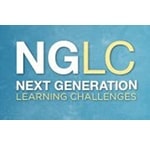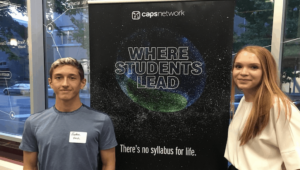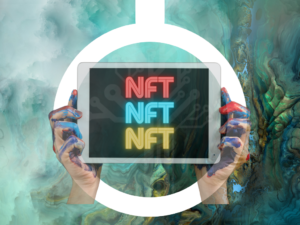A Case for Certification

 With unemployment stalled near 9 percent there are still millions of unfilled high paying jobs across the United States. We have a workforce at least partiall unprepared for for 21st century demands. The Next Generation Leadership Challenge website highlights the under preparation:
With unemployment stalled near 9 percent there are still millions of unfilled high paying jobs across the United States. We have a workforce at least partiall unprepared for for 21st century demands. The Next Generation Leadership Challenge website highlights the under preparation:
- Nearly 30 percent of students do not finish high school. The dropout rate among African Americans, Hispanics, and low-income students is nearly 50 percent.
- Only 42 percent of young people who enroll in college complete a bachelor’s degree by the age of 26. Just 12 percent complete an associate degree. Among low-income students, the bachelor’s completion rate is just 26 percent, while only about 14 percent earn an associate degree.
- By 2018, 63 percent of all U.S. jobs will require some sort of postsecondary education.
- In 2008, the average wage for adults 25 and older with a four year degree was $60,954, compared to $33,618 for those with only a high school diploma and $24,686 for those with no high school diploma.
- Nearly 22 million new workers with postsecondary degrees will be needed by 2018, but it is estimated that the U.S. higher education system will fall short of that mark by 3 million graduates.
These statistics suggest that we need more colleges, or higher completion rates from existing colleges, or some new cost effective alternatives–probably a lot of all three.
A college credential is market signal for most, a social signal for some (and a few people are actually interested in learning). College going rates are a complicated mixture of market signals (i.e., want ads), cost, time commitment, and level of preparation–a big multi-variable return on investment guestimate based on anicdotal information and perceived social pressures.
The fastest and cheapest way to increase college completion is for existing colleges to increase completion rates by pinpointing skill gaps and supporting individual progress. (see Innovations for Student Success at ASU)
Next generation college models are also part of the equation. Blending the best of online learning and onsite support hold the promise of faster, cheaper, post secondary education particularly in career and technical training. NGLC is confident that models will emerge that serve low income populations for $5,000 or less per year with high completion rates.
Examples of rapid pathways to mastery are widely evident in military and corporate training (see interview with Richard Boyd, Lockheed). A couple of large scale experiements (across a big online network like Kaplan or a big community college network like Maricopa County) with modular instructional components would provide valuable guidance about what works best for which student groups.
As Anya Kamentz suggested in DIY U, the most exciting and dynamic category is informal learning. It’s often free or cheap, usually self paced, and usually just-in-time rather than just-in-case.
If employers with emerging job clusters collaborated to define job requirements, it would be relatively simple to create assessment systems that would certify adequate preparation. These certification systems would allow people to choose from a variety of formal and informal educational approaches.
Edexcel, a Pearson company, manages certification systems for a variety of pro-tech jobs in Commonwealth countries. For example, you can earn a Banking & Finance certificate to win a job in a retail bank. P2PU.org is creating a badge system for web designers and developers–learn Ruby by watching YouTube videos or attending General Assembly classes and earn your badge. In some job categories a certificat or badge and a portfolio of work will become degree equivalents. I don’t want to see more barriers to job acquisition, but I would like to see faster, cheaper, and better learning pathways for people to skill-up and gain employment. Like Anya, I’m more optimistic about edupreneurs than I am about higher ed innovating.
The U.S. needs more college grads. More precisely, we need a 21st century job ready workforce. Informal learning and certification systems will prove to be part of the solution.






0 Comments
Leave a Comment
Your email address will not be published. All fields are required.